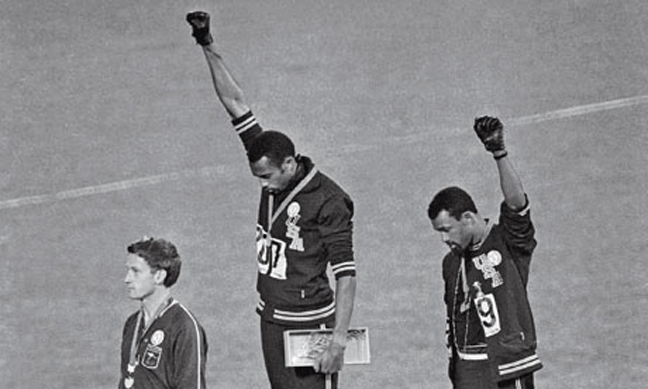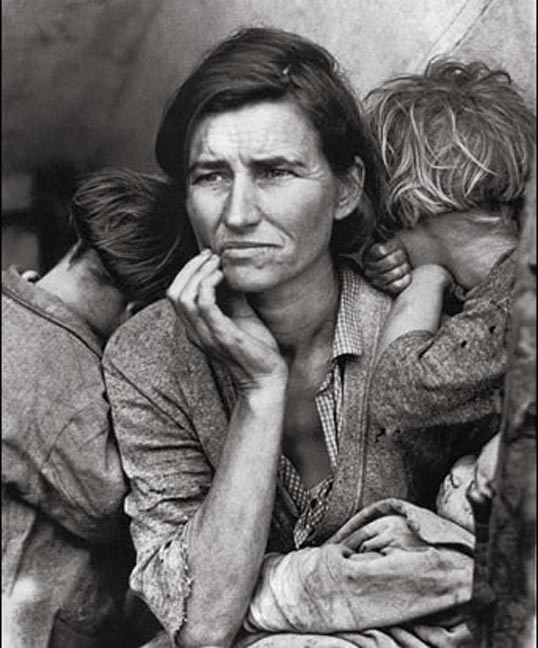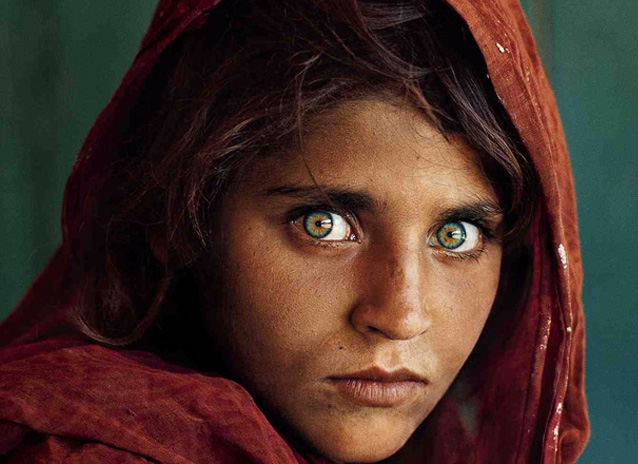 |
Diegesis: Three human figures, the raised arms of two of the figures, the uniforms. Signifiers: The three human figures, the metals, the hand gestures, the uniforms. Signified: because all the human figures are wearing uniforms with the letters USA on them and because they have metals and are on raised platforms (even though the platforms cannot be seen in the photo, they can be imagined because of the perspective) it can be gathered that these people have taken part in some sort of competition event. Because of the field behind them and based on the fact that they are all in good shape, we can guess (without context) that it was a sporting event. The different levels of raised platforms that they are standing on signify what place they came in in the event (gold, silver or bronze). The raised hands signify the "black power salute" or a "human rights salute," which, of course, signifies equality amongst all humans regardless of race, sex or sexual preference. Myth: The myth that this photo engages with is most apparent in the human rights salute, with the myth or ideology being that all people are created equal. The fact that a salute is needed evokes the prior widely held belief that some humans were "less" than others. |
 |
Diegesis: the woman, the three children. Signifiers: the woman, the three children, the shabby clothing. Signified: because they are wearing shabby clothing and they appear unwashed, it can be gathered that thy are in poor financial standing. The mother is a signifier for the strength that these children must rely on. She is also a signifier for the Madonna and child because of the similar body positioning. She offers her face to the viewer, which signifies that she is the one who must address the problems her family faces. The baby is a signifier of the future. Her gaze is a signifier of the past because she is looking towards the given rather than the new. Myth: The mother is supposed to do whatever it takes to care for her children. She is the woman that they are all leaning on and towards. Her stare does not look at the viewer, but rather she is looking to the right, which indicates that she is looking towards the figurative past. In other words, she looks towards the given instead of the new. The new present in this photo is the baby. Past present and future is present in this photo. The title, Migrant Mother provides anchorage for what is actually happening in the photograph. |
 |
Diegesis: the girl, her clothing, her gaze. Signifiers: the girl, her clothing, her gaze. Signified: Her gaze signifies pleading with the viewer. She is a symbol of beauty and innocence. She puts a face to the plights of refugees, which allows viewers to relate and sympathize. There is also no context in the photo itself, which creates an emptying of meaning, which allows for the viewer to project themselves onto the photograph (perhaps in a protective way, in addition to many other ways). Myth: The myth in that this photo challenges is that children are innocence. Note: The other photos that I have discussed simply document events and they are significantly different from this photograph and the difference is contact. The girl in this photo looks straight on at the viewers, whereas the other photographs are documentations of what happens rather than someone who is directly pleading to the viewer. |
 |
 |